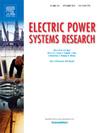An overview of methods for detecting and locating incipient faults in underground cables
IF 3.3
3区 工程技术
Q2 ENGINEERING, ELECTRICAL & ELECTRONIC
引用次数: 0
Abstract
Detection and location methods for incipient faults in underground cables are crucial for minimizing system recovery time due to their significant impact on operation and supply continuity. These methods utilize advanced technologies like real-time monitoring, data analysis algorithms, and precise diagnostics to enhance the ability to detect and address potential faults, thus improving system efficiency. This paper reviews incipient fault detection and location methods for underground distribution networks (UDN), analyzing literature from 2008 to the present. It compares methods based on efficiency parameters, types of faults, fault models, required data, system characteristics, and the integration of active distribution networks (ADN). The analysis identifies gaps for future research and discusses future challenges and opportunities in incipient fault detection and location.
求助全文
约1分钟内获得全文
求助全文
来源期刊

Electric Power Systems Research
工程技术-工程:电子与电气
CiteScore
7.50
自引率
17.90%
发文量
963
审稿时长
3.8 months
期刊介绍:
Electric Power Systems Research is an international medium for the publication of original papers concerned with the generation, transmission, distribution and utilization of electrical energy. The journal aims at presenting important results of work in this field, whether in the form of applied research, development of new procedures or components, orginal application of existing knowledge or new designapproaches. The scope of Electric Power Systems Research is broad, encompassing all aspects of electric power systems. The following list of topics is not intended to be exhaustive, but rather to indicate topics that fall within the journal purview.
• Generation techniques ranging from advances in conventional electromechanical methods, through nuclear power generation, to renewable energy generation.
• Transmission, spanning the broad area from UHV (ac and dc) to network operation and protection, line routing and design.
• Substation work: equipment design, protection and control systems.
• Distribution techniques, equipment development, and smart grids.
• The utilization area from energy efficiency to distributed load levelling techniques.
• Systems studies including control techniques, planning, optimization methods, stability, security assessment and insulation coordination.
 求助内容:
求助内容: 应助结果提醒方式:
应助结果提醒方式:


